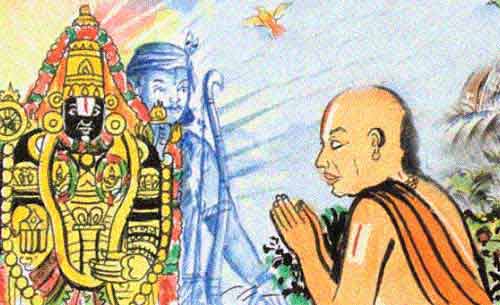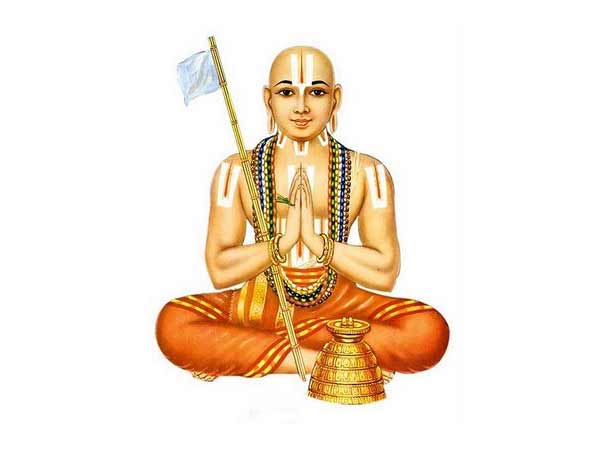Bangaru Baavi (Golden Well) There is a well by the side of Lord’s chief kitchen. This well is known as Bangaru Baavi (Bangaru means gold in Telugu. Baavi means well). When devotees come out through the Golden door after having the darshan, a path leads to the chief kitchen opposite the Golden door. Adjacent to Read More
Tag: Tirumala Nambi
Everyday Tirumala Nambi used to get water from a near by Theertham Papanasanam, ten miles away from the temple for the Abhishekam of the Chief Idols
Tirumala Nambi – Sri Ramanujacharya’s maternal uncle
Tirumala Nambi – One among 5 Gurus of Sri Bhagavad Ramanujacharya Tirumala Nambi, who served God was also a great scholar in Sanskrit as well as Dravidian language i.e., Tamil. He was one among the five gurus of Sri Bhagavad Ramanujacharya who advocated Vishista Advaitha philosophy. Not only this, Tirumala Nambi was Sri Ramanujacharya’s maternal Read More
Tirumala Nambi – 1st Citizen of Tirumala
Tirumala Nambi – Sri Saila Poorna In the 10th century A.D. there lived a great Vaishnava devotee by the name Yamunacharya in ‘Sri Rangam’ a popularly famous Vaishnavite pilgrim center. With all the sincerity he had at his command, Sri Yamunacharya was serving Lord Sri Ranganatha. Being an authority on Vishista Advaitha he was also Read More
Sri Ramanuja
Sri Ramanuja – Great Personality Sri Ramanuja was born to Kesava Somayaji – Kanthimathi couple in the year 1017 A..D in Pingala Year, Chitra Month, Mesha Raasi, Thiruvadhira Nakshatra at Sriperumbudur near Kanchipuram. Glow and Appearance His maternal uncle Tirumala Nambi (Sri Saila Purna) came from Tirumala to Sri Perumbudur, looked at the child, and Read More


